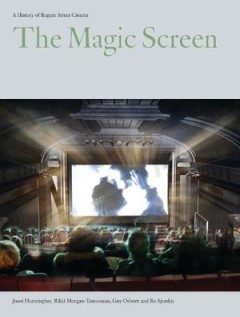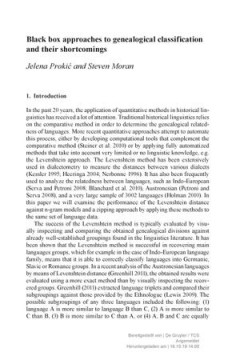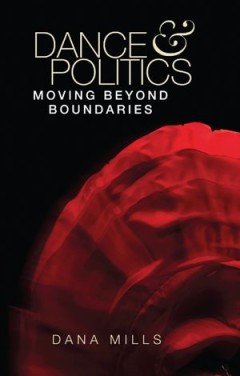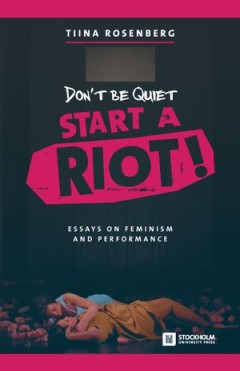Filter by

Performing Hysteria: Images and Imaginations of Hysteria
Cross-disciplinary analysis of contemporary images and representations of hysteria We seem to be living in hysterical times. A simple Google search reveals the sheer bottomless well of “hysterical” discussions on diverse topics such as the #metoo movement, Trumpianism, border wars, Brexit, transgender liberation, Black Lives Matter, COVID-19, and climate change, to name only a few. Against…
- Edition
- -
- ISBN/ISSN
- 9789461663139
- Collation
- -
- Series Title
- -
- Call Number
- 792 PER p

Nocturnal Fabulations: Ecology, Vitality and Opacity in The Cinema of Apichat…
Nocturnal Fabulations is an essay in intercessing. This is not a book that is simply ‘about’ Apichatpong Weerasethakul, though it does engage his work in detail. It is a book that deeply questions what else might be at stake in setting up the conditions for collaboration across two genres: cinema and writing. This collective project is animated by a shared curiosity in the pragmatics of fab…
- Edition
- -
- ISBN/ISSN
- 9781785420405
- Collation
- -
- Series Title
- -
- Call Number
- 791.43 SZY n

The First Sail: J. Hillis Miller
The film-book The First Sail: J. Hillis Miller is based on the documentary film of the same name made in 2010. The political, academic and environmental contexts surrounding this film since its release prove with more and more urgency the need to read and listen to J. Hillis Miller, and would require revisiting everything that has been said and seen. Together with the film transcript and an int…
- Edition
- -
- ISBN/ISSN
- 9781785420030
- Collation
- -
- Series Title
- -
- Call Number
- 791.43 KUJ f

The Magic Screen
The story of the (now restored) Regent Street Cinema is the fourth volume exploring the University of Westminster's long and diverse history. This multi-authored volume tells its history from architectural, educational, legal and cinematic perspectives and is richly illustrated throughout with images from the University of Westminster archive. A print paperback can be purchased direct from the …
- Edition
- -
- ISBN/ISSN
- 9781911534235
- Collation
- -
- Series Title
- -
- Call Number
- 791.43 HUN m

Collaborative Production in the Creative Industries
In recent years research into creative labour and cultural work has usually addressed the politics of production in these fields, but the sociotechnical and aesthetic dimensions of collaborative creative work have been somewhat overlooked. This book aims to address this gap. Through case studies that range from TV showrunning to independent publishing, from the film industry to social media pla…
- Edition
- -
- ISBN/ISSN
- 9781911534280
- Collation
- -
- Series Title
- -
- Call Number
- 745 COL c

Mozart'S 'La Clemenza Di Tito': a Reappraisal
"In the two centuries since Mozart’s La clemenza di Tito was first performed, and the almost three centuries since Metastasio created the libretto, many rumours, myths and prejudiced opinions have gathered around the work, creating a narrative that Mozart, Mazzolà and their contemporaries would scarcely recognise. The essays in this book contribute ideas, facts and images that will draw the …
- Edition
- -
- ISBN/ISSN
- 9789176350553
- Collation
- -
- Series Title
- -
- Call Number
- 792 MOZ m

Chapter Quantitative explorations of the worldwide distribution of rare chara…
In this article, the distribution of rare features among the world’s languages is investigated based on the data from the World Atlas of Language Structures (Haspelmath et al. 2005). A Rarity Index for a language is defined, resulting in a listing of the world’s languages by mean rarity. Further, a Group Rarity Index is defined to be able to measure average rarity of genealogical or areal g…
- Edition
- -
- ISBN/ISSN
- 9783110219098
- Collation
- -
- Series Title
- -
- Call Number
- -

Chapter 6 On representing anchored parentheses in syntax
The paper is organised as follows. In order to establish which kinds of parentheses should be considered ‘anchored’, I present a global overview in §2. This is followed by a discussion of the core properties of anchored parentheses, focusing on the relation between anchor and parenthesis, and their ‘specificational’ interpretation. §3discusses anchored parenthesis in the domain of par…
- Edition
- -
- ISBN/ISSN
- 9781614517900
- Collation
- -
- Series Title
- -
- Call Number
- -

Dance and Politics
"Since ancient times and across cultures, dance has provided a powerful form of human expression. In this inspiring book, Dana Mills examines the political power of dance from a global perspective. Mills explores different dimensions of dance as a form of intervention into a politics more commonly articulated in words. She is interested in dance as a system of communication that allows its subj…
- Edition
- -
- ISBN/ISSN
- 9781526105172
- Collation
- -
- Series Title
- -
- Call Number
- -

Don’t Be Quiet, Start a Riot! Essays on Feminism and Performance
This collection of essays investigates elements of the human voice and performance, and their implications for gender and sexuality. The chapters address affect, pleasure, and memory in the enjoyment of musical and theatrical performance. Rosenberg also examines contemporary feminist performance, anti-racist interventions, activist aesthetics, and political agency especially with regard to femi…
- Edition
- -
- ISBN/ISSN
- 9789176350232
- Collation
- -
- Series Title
- -
- Call Number
- 792 TII d
 Computer Science, Information & General Works
Computer Science, Information & General Works  Philosophy & Psychology
Philosophy & Psychology  Religion
Religion  Social Sciences
Social Sciences  Language
Language  Pure Science
Pure Science  Applied Sciences
Applied Sciences  Art & Recreation
Art & Recreation  Literature
Literature  History & Geography
History & Geography